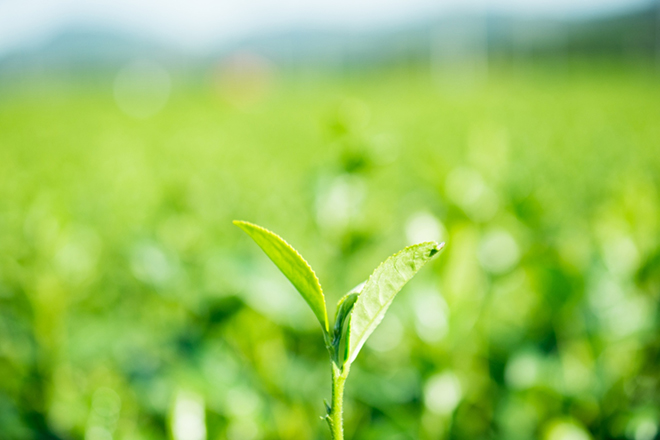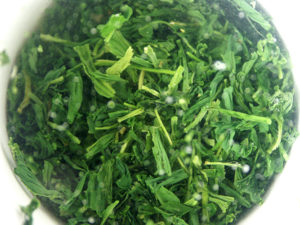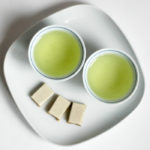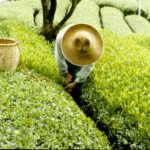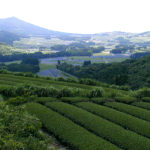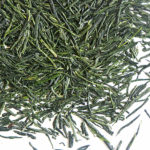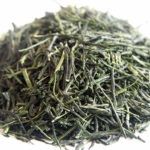A little history of growing green tea in Japan
Tea shrubs have been cultivated in Japan since the early 13th century. The first tea seeds were introduced there by a travelling monk called Eisai who brought them from his travels in China. In 1202, he gave them to the monk Myōe of the Kōzan-ji Monastery, which lies at the foot of the Taganoo Mountain near Kyoto. Myōe began to grow tea shrubs around the monastery, and his tea became famous all over the region. Soon, tea plantations started to spring in many places around Kyoto. However, none of these teas were as revered as the produce from the Toganoo Mountain. Soon, the tea grown at the foot of the Toganoo Mountain began to be denoted Honcha – genuine tea – while all the other teas were called Hicha. In a certain period, popular games were held around Kyoto in which the contestants were supposed to tell genuine tea from the others in a “blind” tasting.
Sun or shade?
As the demand for green tea grew over time, people began to ask why the tea from the Toganoo mountain was so exceptional. What makes it so sweet, fresh and rich in taste? How come no other tea can match it? Soon, the brighter tea growers understood that it was caused by the conditions in which the tea shrubs grew. While the Toganoo tea grew in a mountainous habitat, shaded by tall trees, the teas from other places grew mostly in open lowlands that lacked taller vegetation. Clearly, the main issue here was the sunshine the tea received on the Toganoo Mountain. The tea growers from around Uji were the first to shade their tea shrubs. These methods were gradually improved and have been preserved until the present day. Now the growing of shaded tea shrubs, Kabusé, is a common practice.
Sweet or bitter tea?
The question is why the teas from shaded shrubs are sweeter and generally more delicious than those from unshaded sites? To understand this, let us delve into the chemical processes, which take place in tea plants. During their growth, tea shrubs produce amino acids, which are necessary for the development of budding leaves. When the right time comes in the spring, tea plants begin to transport these amino acids into the sprouting leaves. Once they are touched by sunlight, they begin photosynthesising, which in turn leads to the transformation of these amino acids into catechines – typical tea antioxidants. While amino acids are chemical compounds that give tea its sweet taste, catechines make it bitter.
Mysterious umami
In the early 20th century, the Japanese chemist Kikunae Ikeda (1864–1963) described a new, so far unknown, fifth flavour (complementing sweet, bitter, sour, and salty) and called it umami. Umami translates as “pleasant taste”. Ikeda found the substance that lies behind it in the kombu seaweed and later in soy beans and wheat. The umami taste is caused by a chemical compound called glutamate, which is in fact an amino acid very similar to L-theanine, a substance contained in most types of green tea. Umami is a delicious taste that is hardly recognisable by itself, but it combines with many other flavours in various foodstuffs, such as tomatoes, mushrooms, soy sauce, Parmesan and, naturally, green tea.
The pursuit of the delicious taste of the green tea has given the direction to the Japanese tea industry for decades. It is amazing to watch the precision with which tea producers have been improving their technologies in order to achieve their aim. The sense of detail with which they devote themselves to growing tea shrubs and the modern approach to processing tea leaves are amazing. The resulting tea is often of superior quality and, above all, it always brings a unique experience.
A possible pitfall of this approach is the uniformity of the flavour spectrum of mainstream Japanese tea produce. The unnatural environment in which the tea shrubs are grown also can raise questions. Such shrubs are mainly propagated by cuttings without deep root system grown in a shallow layer of substrate, which needs to be constantly replenished with nutrients necessary for growth. At the same time, the boom of mechanisation in the past decades has shaped tea plantations into easily managed vast orchards, where the conditions are far from natural.
Fortunately, the recent years have seen the emergence of tea growers who want their tea shrubs in a good shape. Natural and healthy conditions for tea cultivation, avoiding chemistry in pest control and growth promotion, manual collection and processing of tea leaves are not a matter of course in modern-day Japan. Yet more and more tea farmers and small growers have been returning to them. Let’s keep your fingers crossed for them and let’s try to drink Japanese green teas with more than just the darned umami taste in our minds.
Source: The Story of Japanese Tea: a broad outline of its cultivation, manufacturing, history and cultural values, Autor Tyas Sōsen
You can buy the book here.

